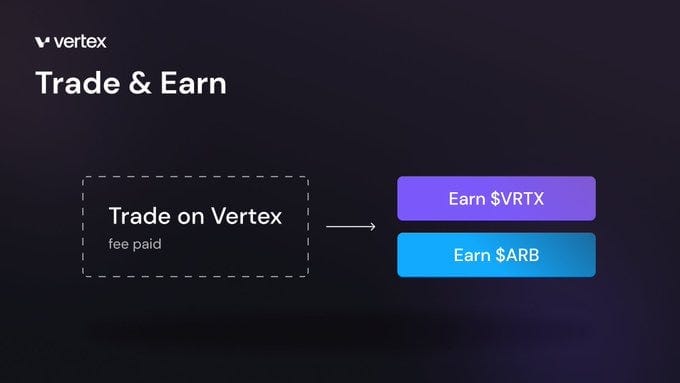Vertex Protocol | Unified DeFi Platform for Trading & Lending

Vertex Protocol was a decentralized exchange (DEX) built on the Arbitrum Layer‑2 network that offered a full suite of trading and finance tools: spot trading, perpetual futures, and a money market — all in one platform.
What made Vertex stand out was its hybrid model: it combined a central order book (off‑chain order‑matching for speed) with on‑chain liquidity via an automated market maker (AMM). That gave traders low latency (near‑CEX speeds) and the transparency/self‑custody benefits of DeFi.
Another major draw was unified cross‑margining — meaning users could use one collateral pool across multiple markets (spot, perps, lending) rather than having to manage separate margin accounts. That boosts capital efficiency and flexibility.
Fees were also competitive: makers often traded for free, and taker fees were low, making it attractive especially for high‑volume or frequent traders.
The native token VRTX was used for governance, staking, fee discounts, and incentives for liquidity providers and traders.
✅ Why It Appealed to Traders & DeFi Users
- All‑in‑one platform: Spot, perpetuals, and lending markets in one place — easier than juggling multiple exchanges.
- Speed + Decentralization: Order‑book trading with low latency, plus on‑chain settlement to preserve self‑custody.
- Capital efficiency: Cross‑margining and ability to use one pool of collateral.
- Incentives & token utility: VRTX rewards, staking, liquidity‑provider bonuses.
⚠️ What Changed — Shutdown & Migration (2025)
As of July 8, 2025, Vertex Protocol announced that it would shut down its DEX operations. The platform was acquired by Ink Foundation, triggering a migration of infrastructure and a planned transition for users.
All trading across its EVM deployments was being phased out, and the native VRTX token was sunset. VRTX holders became eligible for an airdrop of a new token (INK) under a snapshot program.
The shutdown means that what once positioned Vertex as a premiere hybrid DEX no longer operates — traders are advised to close positions, withdraw assets, and follow official migration instructions if they held VRTX or used the platform.
💡 What Vertex Leaves Behind — and What to Know
Vertex Protocol demonstrated a promising model: high‑performance, low‑fee order‑book trading + decentralized custody + multi‑market integration. For a time, it bridged some of the most frustrating divides in DeFi (speed vs. decentralization, derivatives vs. spot vs. lending).
But the 2025 shutdown shows even innovative DeFi projects face challenges — competition, sustainability, and evolving market dynamics can change everything.
If you’re researching similar platforms now, treat Vertex’s history as a case study: always consider not only features, but also long‑term viability, tokenomics, and migration risks.